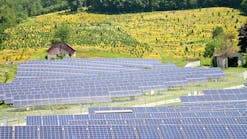Virginia may let Data Centers fire up Diesel Generators when PJM Grid is under duress
Virginia's top governmental regulator for environmental issues is considering encouraging and allowing data centers located in certain areas to engage their emergency generators, many of which run on diesel fuel, when the grid operator issues load management alerts.
The “Maximum Generation Emergency/Load Management Alert” calls come from system operator PJM Interconnection when electricity demand is particularly high and threatening to rise above available generation capacity in the system. The alerts can be system-wise or for particular counties.
The state's variance, if approved, would be for data centers located in the Virginia counties of Fairfax, Loudoun and Prince William. It would approve emergency generation from those types of on-site power generators considered Tier II and Tier IV, both related to diesel-fueled machines.
“The local variance shall apply only during periods when a maximum generation emergency/load management alert or higher level of alert, warning or action...is in effect,” the Virginia Department of Environmental Quality proposal reads. “Each affected data center shall notify the department within three hours of commencing to operate its Tier II and Tier IV emergency generators...”
The state’s Department of Environmental Quality could revoke the order for any statutory reason. The variance expires on July 31, in any event.
Read more in EnergyTech about Data Centers, Energy Use and Options for the Future
Cumulus marks Construction milestone for Data Center to be directly connected to Nuclear Power Plant
Enchanted Rock delivering RNG-fueled on-site power for Microsoft Data Centers
Why do Data Centers need their own Microgrid?
PJM Interconnection oversees the grid transmission and movement of wholesale electricity in all or parts of Delaware, Illinois, Indiana, Kentucky, Maryland, Michigan, New Jersey, North Carolina, Ohio, Pennsylvania, Tennesse, District of Columbia, West Virginia and Virginia.
Data centers increasingly are becoming a dominant user of electricity. A University of Virginia study in 2021 predicted that data centers flocking to the region may help increase electricity sales nearly 40 percent by 2035.
At the same time, the state’s environmental policies are pushing a growth in intermittent renewable energy resources such as solar and utility-scale wind power.
-- -- --
(Rod Walton, senior editor for EnergyTech, is a 15-year veteran of covering the energy industry both as a newspaper and trade journalist. He can be reached at rwalton@endeavorb2b.com).
Follow us on Twitter @EnergyTechNews and @rodwaltonelp and on LinkedIn.





